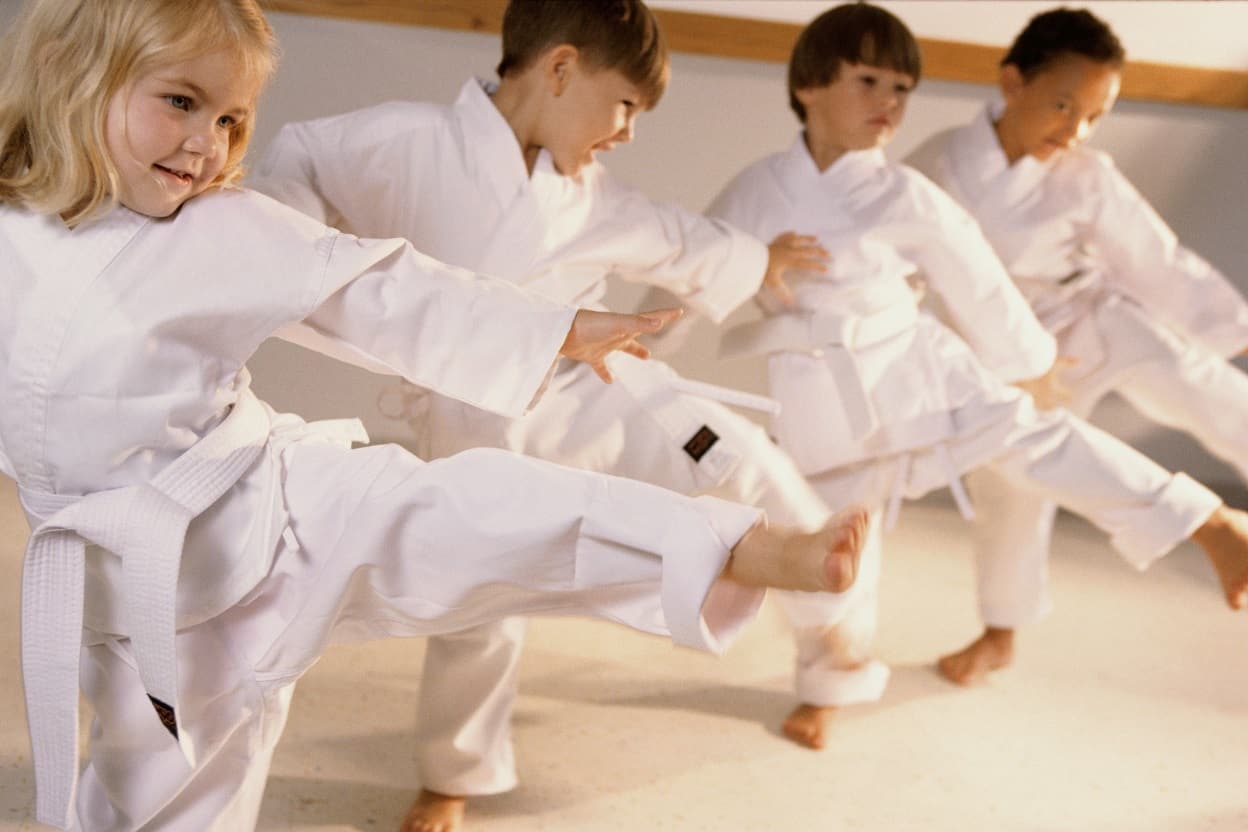Pretending and imagination become real in a costume.
With Halloween on the horizon, kids and adults of all ages are starting to prepare for the day and night of fun and all the events preceding it. A quintessential part of the spooktacular fun is pairing actions, words, phrases, and voices with the costume and character chosen.
The wonderful world of "make-believe." Pretending that Superman can move mountains with one finger or that Batman and Spiderman have sky-flying accessories and implants. Princesses and fairies ride unicorns, and all police officers and firefighters are on the scene. But there is a physical limit to how far kids can act out these heroes and mentors.

On the other hand, children who are remotely trained in martial arts are finely tuned to use their skills and, therefore, possess the capability to inflict bodily and property damage as well as relying on the knowledge that, if needed, can use their training as a scare tactic to verbally threaten or bully others at school, in the community, and at home.
Now, let's continue our October Talk and Topic as I discuss Halloween's thrills, chills, and spills and how to handle some challenges in and out of costume."
What do you want to be when you grow up?
Even with good intentions, the power and force of karate moves during playtime can get carried away as the young "ninja" shows off or tries to teach others how to make the same moves. On the one hand, it proves the sheer chi behind the physics of the martial arts is being ingrained and successfully learned by the student, but flip the coin, and it is easy to see just how powerful the artistry is and why the fascination of the sport and lifestyle has a shining spot in so many aspects of our everyday lives; including television, the silver screen and computer games and apps; the new phase craze in children's technology. To wrap it up, children will mimic what they love, see, and hear with hopes and dreams of that being their reality.
Getting physical.
Kids are naturally drawn to the martial arts for a variety of reasons. The martial arts offer something for everyone, from physical to mental and emotional benefits. The physical benefits of martial arts are obvious and can:
- Help kids stay fit and active.
- Teach them discipline and respect.
- Develop coordination, balance, and agility.
Testing their wings
The mental and emotional benefits of martial arts are just as important. Martial arts can help kids develop:
- Self-confidence, self-discipline, and focus.
- Strategies to manage stress and develop problem-solving skills.
- A plan to set and achieve both short-term and long-term goals.
- The highest sense of respect for themselves and others.
Parents become tutors.
We know that martial arts is a super way for kids to make friends and have fun. Filled with other kids who share the same interests, Karate, Kenpo, judo, jiu jitsu, and taekwondo are among the best styles for children to succeed at due to the initial applications of gentleness, coordination, and stamina. As great as any martial art is a way for kids to socialize and make new friends; after the class, the homework extends to the parents.
As parents, it can be difficult to know how to handle it when our kids use their karate moves during regular playtime activities with friends. While it's natural for kids to want to show off their skills, ensuring they understand the difference between karate practice and playtime is important. Here are some tips to help you stop your kids from using their karate moves during playtime.
- Explain the Difference: The first step is to explain the difference between karate practice and playtime to your kids. Explain that karate is a serious martial art and that it should only be used in a controlled environment, such as a dojo or tournament. Explain that during playtime, they should use their karate moves only if it's necessary to protect themselves or someone else.
- Set Clear Rules: Once you've explained the difference between karate practice and playtime, it's important to set clear rules about when and where karate moves can be used.
- Monitor Playtime: It's also important to monitor your kids' playtime activities to make sure they're not using their karate moves. If you see them using karate moves during playtime, remind them of the rules and explain why it's important to follow them.
- Provide Alternatives: Finally, it's important to provide your kids with alternative activities that don't involve karate moves. This could include playing tag, hide-and-seek, or any other activity that doesn't involve physical contact. Try turning off the TV and having a family board game night.
- Model appropriate behavior for your child. Show them how to play with other kids without using karate moves.
Assigning appropriate consequences
